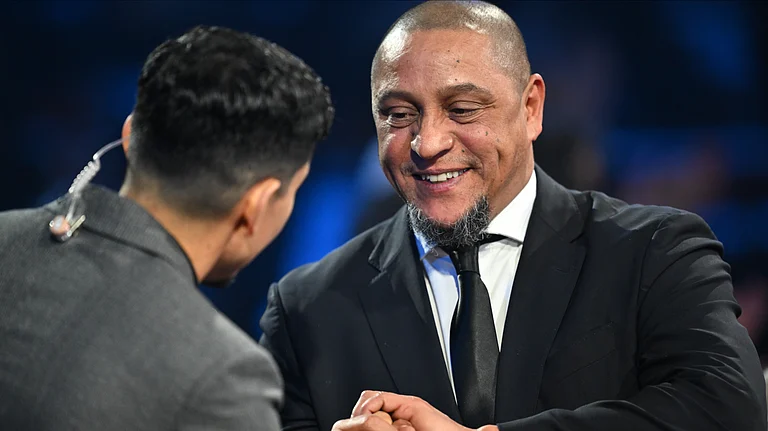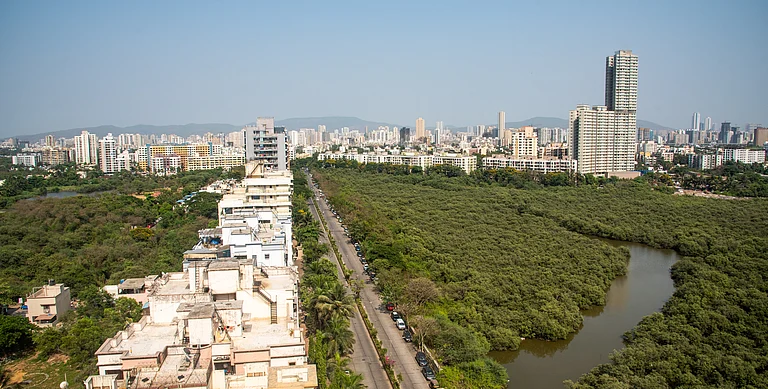In Gorakhpur, the long-held bastion of the BJP and the karmabhoomi of CM Yogi Adityanath, the victory for the party is being seen as a foregone conclusion. Along with Gorakhnath Math, the volunteers of Hindu Yuva Vahini and the RSS cadres have been extensively campaigning for nearly a month. At the BJP election office this reporter visited in mid-February when the campaign kicked in, party workers were already in a celebratory mood, congratulating one another in advance: “Jeet ki agrim badhayi ho.” However, if the whispers among the local observers are to be believed, the BJP’s victory margin may not match its expectations. Gorakhpur’s nine seats are among the 57 Assembly constituencies across 10 districts of Purvanchal that go to the polls on Thursday. Yogi has exhorted party workers to focus on a “record margin” but analysts say that while Yogi as the CM face was almost certain to sail through on the Urban seat, the fight on the other eight seats will not be a cakewalk for the party. Even on the Urban seat, they say, the party’s margin could shrink. The reason for this is the fissure that has begun to emerge within the party after the BJP sitting MLA Radha Mohan Das Agarwal had to vacate the seat to pave the way for Yogi’s first Assembly election from a ‘safe’ seat.
In the early phase of the campaigning, a disgruntled Agarwal, who has represented the seat in the Assembly for four terms, was believed to be “sulking” over the party’s decision to drop him. Eventually, however, he joined the party’s campaign, going door-to-door to seek votes for Yogi. A professor of political science at Gorakhpur University, who wishes not to be named, says that Agarwal had won the 2017 Assembly elections defeating Congress candidate, Rana Rahul Singh, by a margin of 60,730 votes, riding on the “Modi wave.” He points out that Agarwal’s victory margin in the 2012 Assembly polls against SP candidate Raj Kumari Devi was much less: 47,454 votes. “Agarwal’s loyalists are likely to work against the BJP from within,” says the professor.
Besides, the upper caste votes on the Urban seat are also likely to get “split” between the two Brahmin candidates: Chetna Pandey of the Congress and Subhawati Shukla of the Samajwadi Party, the wife of late BJP leader Upendra Dutt Shukla, who served as the party’s state vice-president. After he died last year, the leader’s family alleged that the BJP “sidelined” them, which triggered their move to join the SP. Since Brahmin voters account for about 50,000 in the Urban constituency, the two candidates of the upper caste are likely to benefit from this. Besides bagging a large share of Jatav Dalits’ votes, the BSP may also eat into the SP’s Muslim pie (about 40,000) because its candidate, Khwaja Shamsuddin, comes from the community. Shamsuddin, who has been affiliated with the party for the last 15 years, is BSP’s sector in charge of Gorakhpur region. Considered to be close to BSP supremo Mayawati, Shamsuddin contested the councillor elections in 2000 on the party symbol. The BSP giving 25 per cent tickets to Muslims has not gone down well with Yogi, who recently accused the Opposition of playing “politics of appeasement,” alleging that the BSP’s list of candidates for state polls resembled a “Muslim league”. Bhim Army Chief Chandrashekhar Azad, who started his campaign with much fanfare, determined to challenge Yogi, hopes to tap his core voters: youth. “BJP ek jan virodhi party hai. The youths are fed up with its destructive politics,” he says.
In a region where caste arithmetic decides poll machinations, the BJP is making each move with tremendous deliberation. As part of its vote-sharing arrangement, the party has given one out of the nine seats to the Nishad party chief Sanjay Nishad’s son, Sarvan Nishad, in Chauri Chaura. In doing so, the party has dropped its sitting MLA from the seat, Sangeeta Yadav, who was keen to contest. This is a seat where the NDA will find the battle particularly tough. A predominantly Nishad belt, Chauri Chaura also has a substantial number of Yadvas and Paswans. With candidates from all three castes in the fray, it will be interesting to watch who will have the last laugh here: The other two candidates include BJP rebel Ajay Kumar Singh Tappu, who is contesting as an Independent on the auto-rickshaw symbol, and SP’s Brajesh Chandra Lal, son of five-term MLA Harilal Pasi.
In Gorakhpur Rural, BJP’s sitting MLA Vipin Singh stares at anti-incumbency, locals say. He will be locked in a battle with SP’s Vijay Bahadur Yadav, who has a soft spot among Muslims, more than Mohammad Islam, Asaduddin Owaisi-led AIMIM’s lone candidate in the district. In Piprapur, a mohalla close to Gita Press that falls in the constituency, Muslims allege that Singh has done precious little for them. “We are part of the 20 percent. In Yogi’s UP, we are the least priority. Nothing has been done in this area in the last five years. Our roads remain congested. Our nallahs keep overflowing,” says Shameem Ahmed, a labourer. Yasirzama Siddiqui, a local journalist, takes this reporter around the waterlogged area which gets worse every monsoon season, making it impossible to navigate by foot. The Muslim supporters of the SP say it’s a battle of good versus evil: “Yeh acchai aur buraai ki ladai hai aur buraai ki haar hogi,” says Ahmed. “SP doesn’t engage in the war of words, unlike the BJP, which is relentlessly making statements against Muslims. If they (SP leaders) don’t love us, they don’t terrorise us either,” he adds.
In yet another BJP’s stronghold, Campierganj, where the Nishads constitute around 40 per cent of the population, Bhojpuri actress Kajal Nishad (SP) fights against six-time MLA and former forest minister, Fateh Bahadur Singh, son of former chief minister Vir Bahadur Singh, who is also facing strong anti-incumbency. “This seat has been with a family fiefdom of the Singhs for the last fifty years, but there has been no development. The MLA believes in dabangai (muscle power) and gets false FIRs registered against people here if they dare speak against him. The people of Campierganj want freedom from his misrule,” says Kajal Nishad during a campaign trail. “Bahumat to door ki baat hai (Majority is a distant dream). The BJP won’t even hit the 100 mark,” she adds.
In Nishad-dominated Pipraich, there seemed to be a groundswell of support for the BJP, which is largely to do with welfare schemes, including PM Awas Yojana, Public Distribution System and Direct Cash Benefit Transfer. But even here, as in other constituencies, unemployment is a huge issue; youths have been sitting idle for months, with little good news on the job front. Inflation is a big concern for people across the district. Unemployment and inflation seem to have taken the sheen off welfare schemes in most constituencies. In Chillupar, a stronghold of gangster-politician Hari Shankar Tiwari, his son Vinay Shankar Tiwari, has been winning on a BSP ticket. In 2017 polls, Chillupar had elected BSP candidate Tiwari, the lone non-BJP leader to be elected from Gorakhpur. However, he is contesting on an SP ticket this time around. A new equation seems to be underway here. In the last three terms, the BSP led the race, with the SP and the BJP trailing it. But with three upper-caste candidates in the fray, it is different this year. Tiwari is pitted against BJP’s Rajesh Tripathi and SP’ Rajendra Singh. The Brahmins hold the key to this interesting constituency: Whoever they vote for is likely to have a lead


























